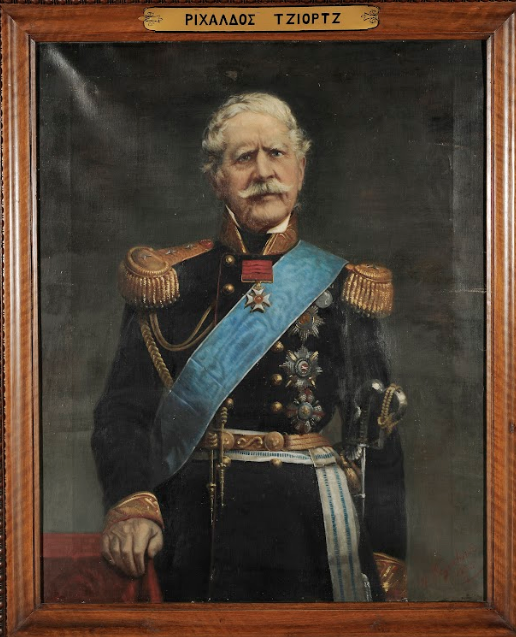Richard Church ( 1785-1873 )

British soldier, born on February 23, 1784, in Cork, Ireland. The second-born son of Quaker merchant Matthew Church, he left his hometown at the age of 16 to enlist in the British Army, initially as an ensign in the 13th Somerset Light Infantry Regiment. In 1801 he took part in the Battle of Abukir, in Egypt, against Napoleon’s forces; in the following year, he was promoted to lieutenant in the 37th Infantry Regiment. In 1806 he became a captain and in 1808 Assistant Quartermaster General in Sicily. In 1809 he took part in the expedition that captured the Ionian Islands, previously under French rule. In the same year, he received the rank of major and three years later he was promoted to lieutenant colonel.
During his time in the Ionian Islands, Church received permission from the British government to raise Greek regiments. Among the soldiers and officers of these units were Theodoros Kolokotronis and other Greeks who had fled mainland Greece. However, shortly after the signing of the first Treaty of Paris (May 1814), the British government decided, under pressure from the Porte, to disband the Greek regiments. In the aftermath of the Napoleonic Wars, Church attended the Vienna Congress (1814-1815), advocating the need to retain under British rule, not only the Ionian Islands, but also Parga and other (former) Venetian possessions in the Epirus region. In a memorandum he submitted to the British delegation, he argued that Britain should become the protector of the Greeks.
In 1817, after obtaining permission from the British government, he went to Naples to serve as lieutenant general the King of the Two Sicilies, Ferdinand I. In 1826, in response to the siege of Missolonghi, Church decided to offer his services to the Greek uprising. In February 1827 he landed at Ermioni, helping to end the skirmishes between rival Greek factions. In 1827, the Third National Assembly at Troezen appointed him commander-in-chief of the army. Church’s first mission was to back up Georgios Karaiskakis, who fought at Faliro and Keratsini – not succeeding in lifting the siege of the Acropolis by Kütahı forces.
In 1829, after the assumption of governorship by Ioannis Kapodistrias, Church liberated Vonitsa, Aitoliko, and Missolonghi, restoring Greek rule in Western Greece. He soon resigned, however, to protest the governor’s decision to appoint his brother, Augustinos Kapodistrias, as deputy in Western Greece. After the Independence, Church was appointed Counsellor of State and in 1836 Lieutenant General of the army. He became involved behind the scenes in the Revolution of September 3, 1843, which marked the transition of Greece from an absolute monarchy to a constitutional monarchy. In the parliamentary elections held in the same year, he was elected plenipotentiary of Zygos in Aitolia.
In 1844 Church was appointed a senator for life by King Otto, an office he would maintain until the abolition of the Senate, two decades later. In the same year, he was replaced as Inspector General by Theodoros Grivas and resigned from the army, ending a long military career at the age of 60. In 1854, Otto awarded him the rank of general. He remained in Athens until his death on March 20, 1873. He was buried at the First Cemetery of Athens at public expense. Better known as “Church’s Tower”, his home in Athens is located at 5, Scholeiou Street, in Plaka.





